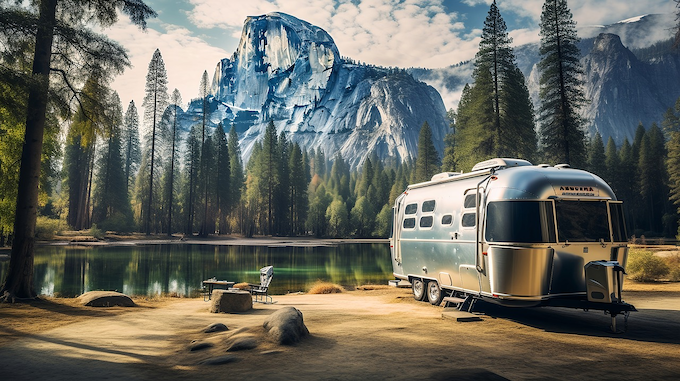
Waterside Wonders: Essential Tips for RV Camping by the Water
Imagine waking up to the soothing sound of water gently lapping against the shore, the fresh breeze carrying a hint of salt, or the earthy scent of a lakeside. For recreational vehicle (RV) enthusiasts, camping next to the water offers an unparalleled experience, whether it’s a serene lake perfect for your wakeboarding boat, a flowing river, or the vast ocean.
However, such idyllic settings come with their own set of challenges and considerations. Let’s take a closer look at a few practical tips for RVers to enhance their waterside camping experience while ensuring safety and environmental responsibility.
1. Selecting the Perfect Spot
- Assessing the terrain: Look for level ground, not too close to the water. This prevents flooding risks and preserves the natural shoreline.
- Sunrise and sunset views: Consider the direction of your RV for optimal sunrise or sunset views over the water.
- Privacy and accessibility: Balance the desire for a secluded spot with the convenience of being close to camp amenities.
2. Water Safety Measures
- Understanding currents and tides: Familiarize yourself with local water conditions, especially if near the ocean or a fast-flowing river.
- Safety equipment: Always have life jackets and emergency gear accessible, especially if you plan to indulge in water activities.
3. Respecting the Ecosystem
- Leave no trace: Keep the area pristine by disposing of waste properly and avoiding disturbing wildlife.
- Eco-friendly products: Use biodegradable soaps and avoid chemicals that can harm the aquatic ecosystem.
4. Preparing for Weather Changes
- Monitoring weather forecasts: Stay updated on weather conditions, as waterside locations can experience sudden changes.
- Securing your RV and belongings: Ensure everything is anchored or stored securely to withstand strong winds or rising water levels.
5. Maximizing the Experience
- Outdoor living spaces: Set up an outdoor living area to enjoy the view. Consider awnings, chairs, and portable fire pits for comfort.
- Water activities: Bring kayaks, fishing gear, or swimming accessories to maximize your waterside location.
- Photography and wildlife watching: These spots are ideal for nature photography and observing wildlife in their natural habitat.
6. Being a Good Neighbor
- Noise considerations: Be mindful of noise levels, especially at night, to respect fellow campers and wildlife.
- Sharing the space: Understand that the waterfront is a shared resource and maintain courteous behavior with other campers.
7. Emergency Preparedness
- First aid and emergency contacts: Keep a well-stocked first aid kit and have a list of local emergency contacts, including the nearest hospital.
- Escape plan: Have a plan in case of emergencies like flash floods, including a route to higher ground.
Camping in an RV next to water can be an incredibly rewarding experience, offering unique opportunities for relaxation and connection with nature. By choosing the right spot, respecting the natural environment, and being prepared for various challenges, RVers can ensure a safe, enjoyable, and memorable waterside camping adventure. Remember, the key is to balance enjoyment with responsibility; leave the place as beautiful as you found it, ensuring it remains a treasure for future visitors.
Image Credit:Pixabay








